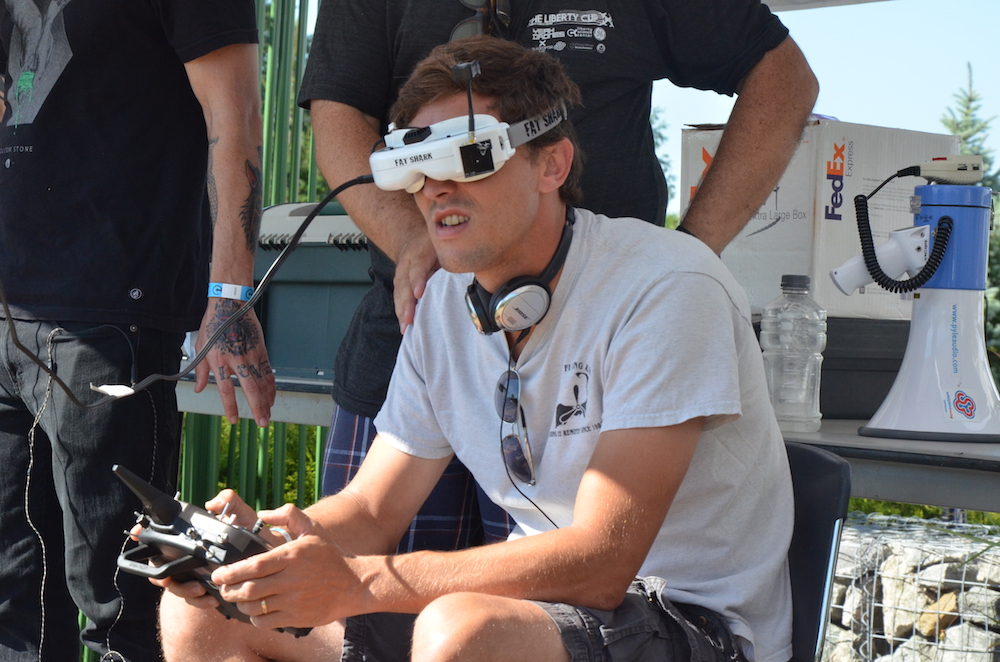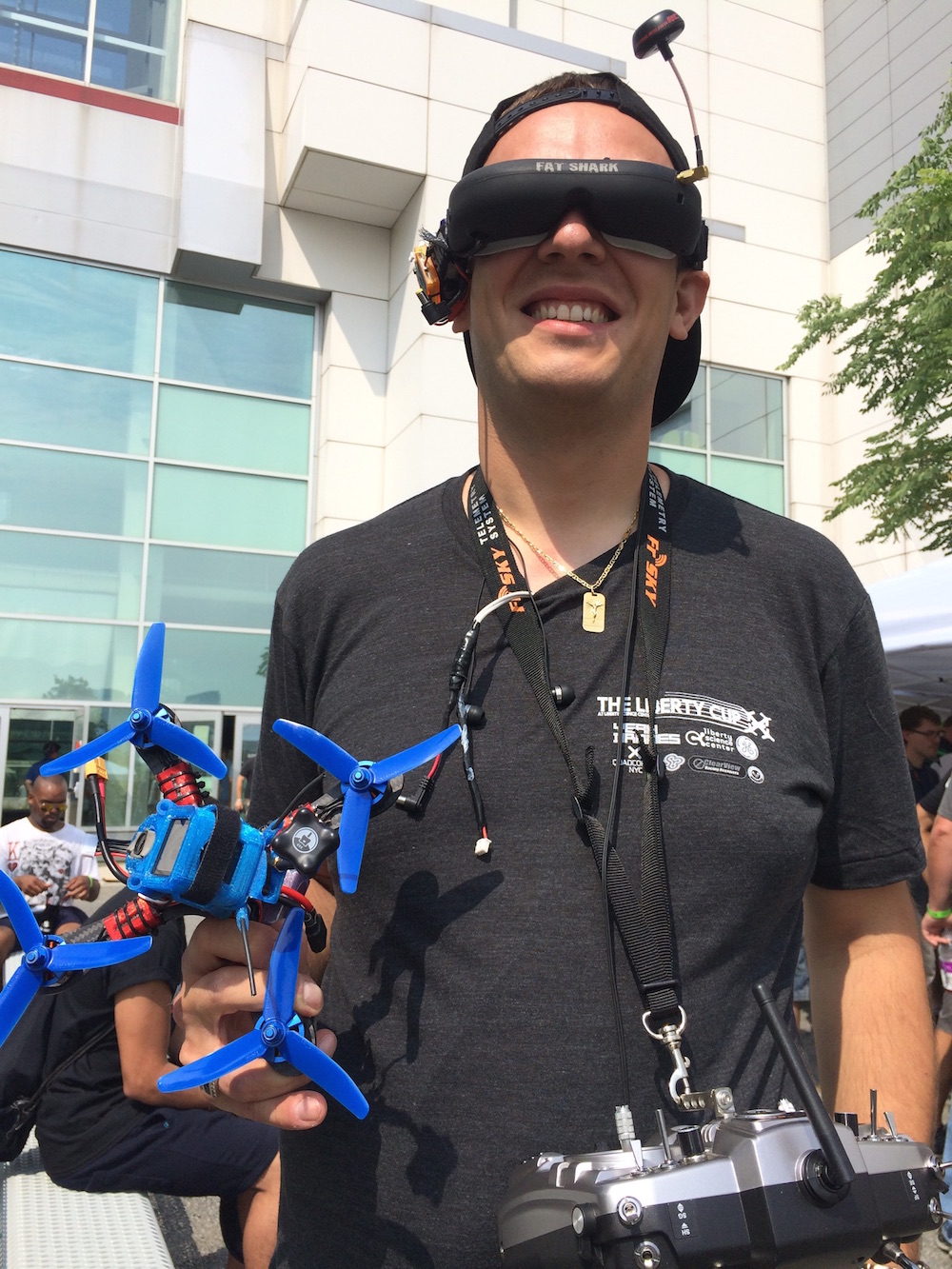May the Best Drone Win: Vehicles Race in First-Ever Liberty Cup

Drone racing, a cross between Formula 1 (F1) auto competitions and a real-life wireless Nintendo game, is poised to become the next big sport — with a high-tech twist.
This past week, the Liberty Science Center hosted the first-ever Liberty Cup, a drone competition taking place in Jersey City, New Jersey, just miles (and one river) away from New York City.
Drone builders and pilots from all over the world flocked to the race, with 100 pilots competing Saturday (July 30) and 24 advancing to the finals on Wednesday (Aug. 3). [Photos from Above: 8 Cool Camera-Carrying Drones]
Pilots donned first-person view (FPV) goggles, which allowed the contestants to see the aerial course from a drone's-eye view. Then, using wireless controllers, pilots directed the drones to fly through a series of gates that bore an uncanny resemblance to Quidditch goal hoops (at least for "Harry Potter" fans).
The pilots with the top-three fastest times qualified for the National Drone Racing Championships, which will be held on New York City's Governors Island this weekend (Aug. 5-7). The finalists include Cain Madere from St. Charles, Louisiana (time: 26.731 seconds); Pete Grehan from New South Wales, Australia (27.726 seconds); and Rafael Paiva from São Paolo, Brazil (28.695 seconds).
The Liberty Cup also awarded Colby Curtola of San Francisco first place for the freestyle competition, in which pilots used the racecourse however they saw fit, attempting to wow the judges. Curtola's captivating trial secured him a place at the national championships.
"I'm setting my sights on the drone nationals and hopefully the drone worlds," Curtola said in a statement. "I want to show the world that the USA has the best pilots out there."
Get the world’s most fascinating discoveries delivered straight to your inbox.
The drones in the competition measure about 10 inches (25 centimeters) across and have four motors attached to tiny helicopter blades, said Andy Shen, founder of the drone-building company Shen Drones. Shen started out as a professional photographer, but switched his focus to drone design when he realized that the drones he made for aerial photography were better than those on the market.
Unlike with other flying machines, the mechanics of drone flight are fairly simple, said Shen, who described himself as a self-taught engineer.
"Drones are pretty dumb machines," Shen told Live Science. "They're not like planes, where the shape has to be perfect or it won't fly." Plus, if a drone crashes, it's easy to simply piece it back together, he said.
The frames of his drones are made from lightweight but durable carbon fiber. Because lightweight drones fly faster, his drones can go up to 100 mph (160 km/h), Shen said. But during races, most pilots fly at slower speeds so that they can make sharp turns, meaning the drones probably flew between 50 and 60 mph (80 to 96 km/h) at the Liberty Cup, Shen said. [5 Surprising Ways Drones Could Be Used in the Future]
However, racing drones do have to speed along, or else they'll crash when their batteries run low, he said. Drones consume a lot of energy, and even with a fresh pack of batteries, the machines last for only about 2 minutes of flying time, Shen said. (Various batteries power the remote control, FPV goggles and the drone itself, he said.)
"It's like racing, but it's full-on 3D, so you have to control it in every dimension," Shen said.
It's hard to say whether drone racing will take off and capture the nation's attention. There are some big sponsors at this weekend's championships; GoPro is presenting the event, and ESPN3 will live-stream the race before editing each event into a 1-hour special, the network said in a statement.
Shen compared drone racing to skateboarding, saying it's not clear whether flying drones will be something people do for fun with their friends, or whether the pursuit will become a competitive sport with a large following.
But Liberty Cup finalist Madere said he is more optimistic.
"I don't think it should really have any limits right now," Madere told Live Science. "It could be as big as F1. A lot of aspects are shared between the two sports, and I consider it a real sport because the competition is real."
Original article on Live Science.

Laura is the managing editor at Live Science. She also runs the archaeology section and the Life's Little Mysteries series. Her work has appeared in The New York Times, Scholastic, Popular Science and Spectrum, a site on autism research. She has won multiple awards from the Society of Professional Journalists and the Washington Newspaper Publishers Association for her reporting at a weekly newspaper near Seattle. Laura holds a bachelor's degree in English literature and psychology from Washington University in St. Louis and a master's degree in science writing from NYU.



